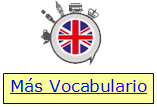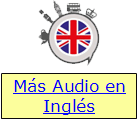|
How to Begin a Presentation in English
Beginning a Presentation
The first few minutes are the most important.
Body language and tone or voice and intonation is MORE IMPORTANT than
what you you actually say. How you say something can be more important
than what you say.
Before you start your talk, you should introduce yourself, thank people
for coming, and maybe make a very short comment that the audience can
relate to. For example,
“Good afternoon! I’m Craig. Thank you for coming to this talk. I hope
the lovely lunch we’ve just had won’t put you to sleep!
Start with a question or a problem that needs to be solved:
“Has anyone here ever had someone swear at them or verbally abuse them
on the phone?” What would you do in this situation.”
Or you could start with some shocking fact:
“Every year, telecom operators receive on average 147 personal
complaints about their service. 147 complaints! How can we reduce this
number?”
Asking your audience to do something really helps them to engage with
your talk:
“Put up your hand if you’ve been insulted on the phone at least once
this year?”
“Now turn to the person next to you and explain how you dealt with it
and how you felt?”

State the purpose of your talk/presentation:
1. Today I’ll be talking to you about the
importance of a balanced diet in the 21st century.
2. This morning I’m going to tell you about the latest developments in
our new project.
3. This afternoon I’ll be taking a look at the rise in pop-up shops.
4. I’ve come here today to report on the results of the questionnaire we
sent to clients.
Outline the structure/format of your talk/presentation:
1. I’ll start by identifying the key components of
a balanced diet, and then I’ll go on to discuss the most effective ways
of obtaining those components.
2. First of all, we’ll look at what has been happening up to now before
going on to discuss possible future ideas for the project and then
answering any questions you might have.
3. We’ll begin by outlining the origins of pop-ups, then discuss their
future viability before comparing your own experience with them.
4. After briefly filling you in on how we devised the questionnaire,
I’ll move on to highlighting the key points of the results, and finally
examine where we can improve. There’ll be time at the end to ask
questions.
We mentioned a useful book on giving presentations in episode 87 about
Academic English:
Presenting in English: how to give successful presentations, by Mark
Powell
Why is it so difficult to give a presentation?
– nerves – Know your subject!
– length – Keep it short!
How can you improve?
– Practice! Practice! Practice!
– use cue cards/bullet points
– Record yourself on audio and video
 *Dispones
de más
PODCAST en inglés publicados en los cuadernos anteriores *Dispones
de más
PODCAST en inglés publicados en los cuadernos anteriores
a los que puedes acceder directamente así como al índice de su
contenido. |



 *Dispones
de más
*Dispones
de más


